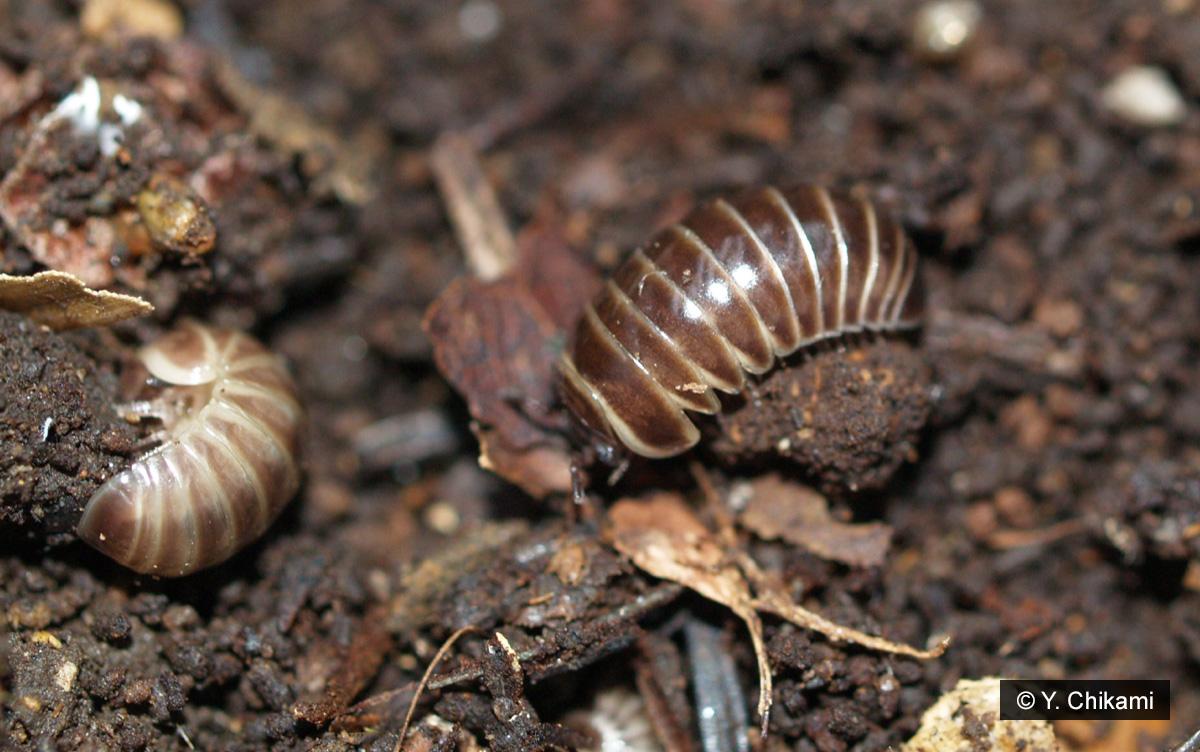Research News
Discovery of Structural Specialization in Myriapod Ovaries: Challenging to a Conventional View

Elaborate observations reveal the structural specialization within an epithelial layer covering oocytes in the Japanese pill-millipede, Hyleoglomeris japonica, considered absent in Myriapoda. Comparing this result with previous descriptions inferred that metabolic activities in the ovarian follicle cells were reduced during myriapod evolution.
Tsukuba, Japan—The ovary is the organ that produces eggs. A layer of somatic cells covers the egg precursors, oocytes, known as the follicle epithelium, which is essential for oocyte growth. In particular, the follicle epithelium of insects is divided into several regions with different functions for oocyte growth. However, this "structural specialization" has not been found in the follicle epithelium of arthropods other than insects, such as chelicerates (spiders and mites), myriapods (millipedes and centipedes), and crustaceans (shrimps and water fleas). Notably, the follicle epithelium in myriapods is a homogenous structure and has been considered to lack such a structural specialization.
Elaborate observations by the researchers reveal the ultrastructural and histochemical nature of the follicle epithelium of H. japonica. Results show that the follicle epithelium of this species has two regions, one with enhanced metabolic activities harboring numerous organelles, such as the mitochondria and rough endoplasmic reticulum, and another with few organelles, indicating reduced activities. This result demonstrates that the structural specialization within a follicle epithelium differs from the conventional interpretation of the myriapod ovarian morphology. Together with previous studies, the researchers provide a novel classification of the structure of the myriapod follicle epithelium. Furthermore, the phylogenetic mapping of the follicle epithelial types suggests a hypothesis that metabolic activities of the follicle epithelium may have decreased during myriapod evolution.
These results also suggest that the structural specialization of the follicle epithelium is not a characteristic of the insect follicle epithelium.
Original Paper
- Title of original paper:
- The structural and functional modularity of ovarian follicle epithelium in the pill-millipede Hyleoglomeris japonica Verhoeff, 1936 (Diplopoda: Glomerida: Glomeridae)
- Journal:
- Tissue and Cell
- DOI:
- 10.1016/j.tice.2024.102372
Correspondence
Assistant Professor YAHATA Kensuke
Institute of Life and Environmental Sciences, University of Tsukuba
CHIKAMI Yasuhiko
Master's Program in Biology, Graduate School of Science and Technology, University of Tsukuba
Current Position: JSPS Research Fellowship for Young Scientists at Faculty of Science, Shizuoka University
Related Link
Institute of Life and Environmental Sciences



